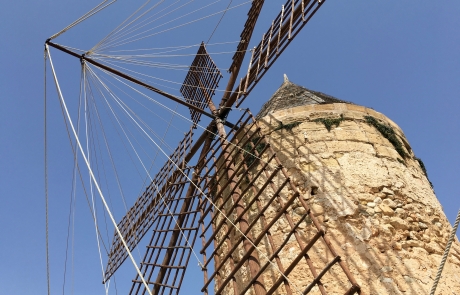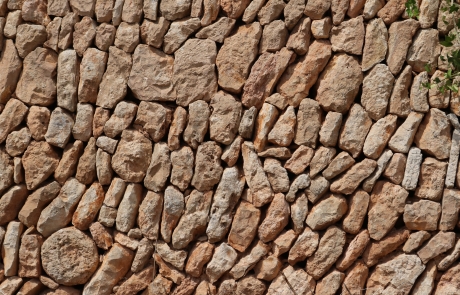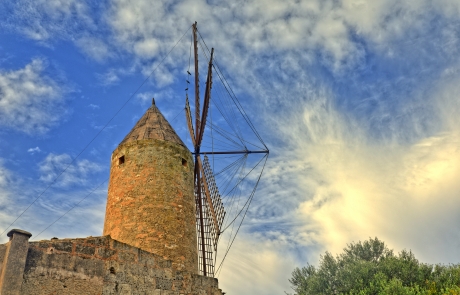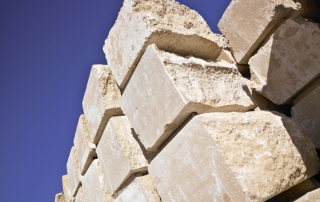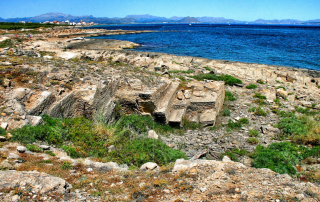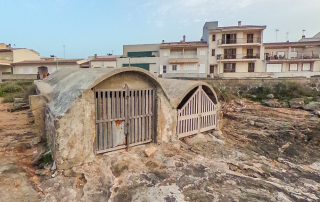Festivals, mills, trails and quarries
In the municipality of Santa Margalida there is a large number of ethnological elements of high historical value. These assets are an important part of the cultural legacy of the population. Ethnological assets can be found in two categories: as intangible assets (popular festivals, folklore, gastronomy …) or as material assets (handicrafts, mills, dry wall or any construction related to the traditional way of life of the people).
Within the town centre, at the highest point of Santa Margarita near the Parish Church of Santa Margalida you can find a good example of a restored 17th century flour mill. Popularly known as “Molí den Curt“. This mill has the particularity of having been the last to stop grinding in Santa Margalida (1950). It stopped working when in 1950 a storm partially destroyed it. In 2004 the mill was restored.
In the rural area of the municipality it is usual to find paths with stone walls on both sides. These roads are popularly known as “carrerasses“. These were created as a result of the segregations carried out throughout the 19th-XX century in the large plots. These are dry stone margins with walls on both sides of the road. Thanks to this, it can be seen how the borders of the fincas and fields can be seen. In this way, the “carrerasses” become a first-rate element in the agricultural landscape of Santa Margalida.
The extraction of sandstone has been a deeply rooted activity in the municipality of Santa Margalida. The starting date of this activity is unknown, as there are quarries next to archaeological sites. Thanks to the observation of the Son Real quarries, it is possible to know how the artisan way of extracting the stone was until the middle of the 20th century.
Other ethnological elements representative of Can Picafort are the jetties. Until the 18th century, although not necessarily uninterruptedly, the coast of the islands has been a hostile environment for the establishment of permanent settlements. In fact, apart from a few specific cases, population centres were not created close to the coast until relatively recent times; both the towns in the coastal municipalities and the rural settlements in the area sought refuge inland. The pattern of hill settlements, prevailing in the municipality of Santa Margalida, is a good example of this behaviour. For centuries, however, fishing motivated the construction of shelters to store boats and fishing gear or to serve as a room or shelter for fishermen. Some cases are already documented in the Middle Ages. The cuttings in the rock form an inclined plane to facilitate the transit of small boats.
Ethnological Museums
Today, museums and archives are the guardians and protectors of this type of heritage. Close to us, you can find two ethnological museums. On the one hand, the Ethnological Museum of Mallorca (located in the village of Muro) offers a global vision of pre-tourist Mallorca. In this way, the typical customs, clothing and tools of the rural environment of Mallorca are made known. On the other hand, in the Interpretation Centre of Son Real it is shown what it was like to live in the Mallorcan possessions.
Follow us!
If you want to be up to date with the latest news, follow us on our social networks

